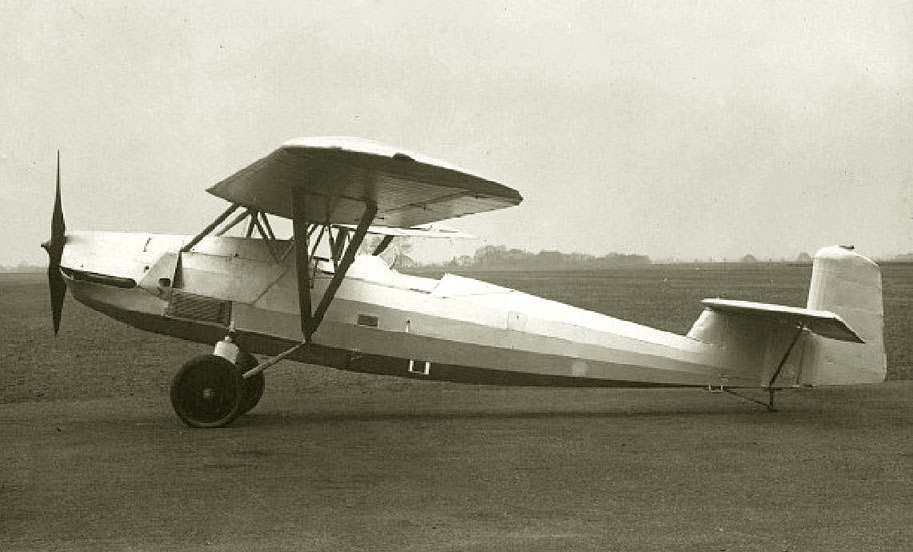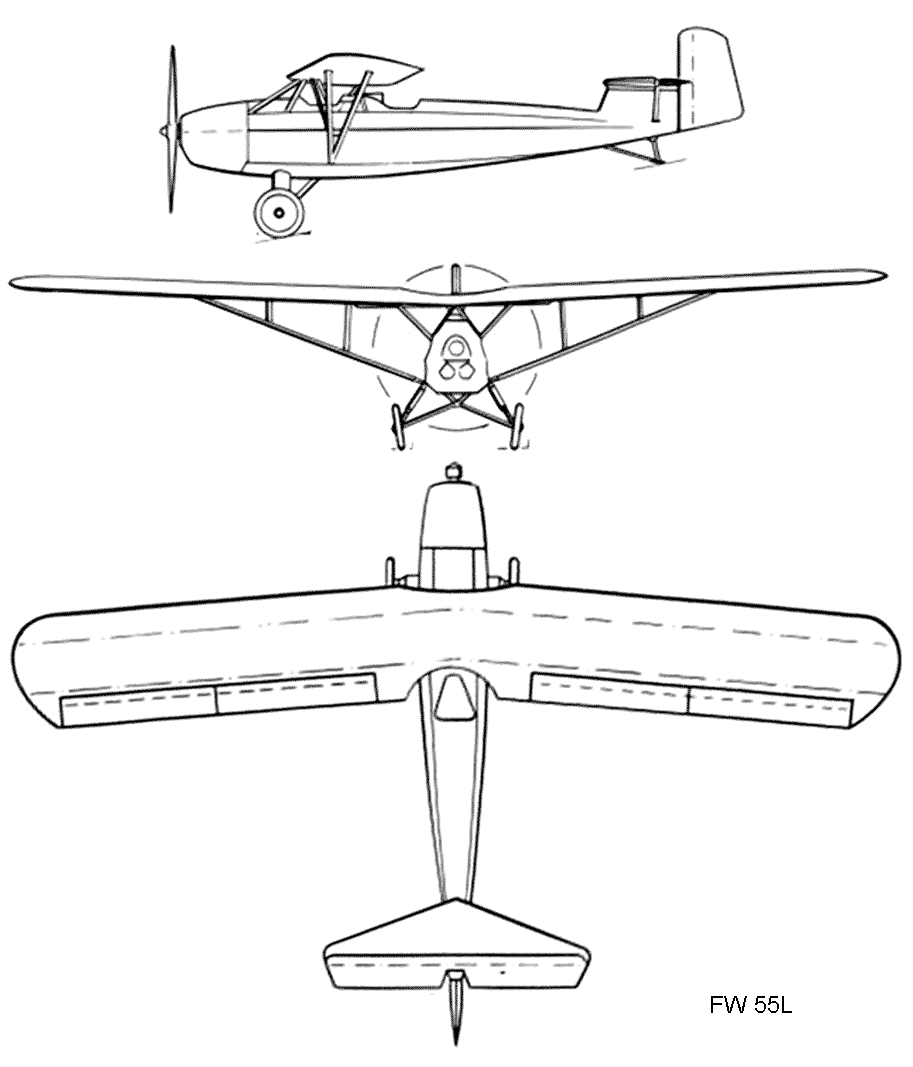|
Fw 55
 |
- Trainer aircraft
- First flight: 1932
- Focke-Wulf
|
Work on the aircraft, which later received the designation FW.55, began in 1931 at the well-known company Albatross, which became famous during the First World War for its wonderful fighters. Since the Treaty of Versailles forbade the design of military vehicles, German engineers were developing training equipment in such a way that it could be used to train military pilots. The Albatross Al.101 aircraft was created precisely for such requirements. It was a fairly large parasol monoplane with a double cabin and an Argus As.10 inline engine.
Tests of the aircraft began in 1932, but were held with great difficulty. Al.101 required a whole series of improvements, so its improved version Al.102 was soon presented. By this time, all design developments were transferred to Focke-Wulf and the matter ended with the fact that a small batch of aircraft was built under the new name FW.55.

Very little is known about the operation of these machines. Judging by the available photographs in June-July 1941, the Luftwaffe was still using a few FW.55 (Albatross Al.101) for training purposes, located in various training schools in Germany.
|
| Crew |
2 |
| Dimensions |
|---|
| Wing span, m |
13.50 |
| Площадь крылa, м² |
22.40 |
| Length, m |
9.30 |
| Height, m |
2.70 |
| Powerplant |
|---|
| 1 × PE Argus As.10C, power, hp |
1 × 240 |
| Weights, kg |
|---|
| Empty |
975 |
| Gross weight |
1,230 |
| Performance |
|---|
| Maximum speed, km |
213 |
| Cruise speed, km |
195 |
| Service ceiling, m |
5,400 |
| Service range, km |
|
 |
Drawing Focke-Wulf Fw 55L
|
Fw 62
 |
- Catapult reconnaissance and patrol floatplane
- First flight: 1937
- Focke-Wulf
|
The technical department of the RLM has prepared a revised task for a two-seat catapult aircraft. Finished in autumn 1936. specifications required from each participant of the competition two versions of projects on one- and two-float chassis. The power of the propulsion system was required at 800-900hp, preference was given to a single-engine scheme. Proposals came from Arado, Dornier, Focke-Wulf and Gothaer Wagonfabrik. Of these, only the latter offered a twin-engine version (two Argus As-410s). From the very beginning, the Technical Department favored the Arado project. Four experimental aircraft were ordered under the designation Ar.196. The more conservative Focke-Wulf project came in second and received an order for two experimental Fw.62s as a stand-in for the winner.
Fw.62 was equipped with a VMW-132 engine - radial air-cooled. The aircraft was an open cockpit biplane. Designed Fw.62 Arbeitlang. The design had one feature - shock-absorbing floats that absorbed shocks during takeoff and landing. All-metal wings were sheathed with light alloy sheets and carried fabric-coated metal ailerons and flaps. The upper wing was attached above the fuselage on X-shaped struts. Biplane box of two-column design with double wire braces. The fuselage was formed by a frame of welded pipes with stringers, giving an oval cross-sectional shape and light alloy skin in the bow and fabric in the tail. Two crew members were placed in tandem behind the wing. The pilot sat forward under a cutout in the upper wing. Defensive armament consisted of one MG-15 machine gun on a mobile mount at the rear of the cockpit.
The first experimental Fw.62-V1 (D-OFWF) flew in the late spring of 1937. Almost immediately flew and V2 (D-OHGF). The engine was a BMW-132Ds 880hp takeoff power with a two-bladed variable pitch propeller. V1 had two single floats, while V2 had one main float and two stabilisers. In both cases, the floats were equipped with rubber shock absorbers with oil dampers. There were mounts for launching from a catapult.
The aircraft were delivered for testing in Travemünde in the summer of 1937. And although they were successful - flight characteristics are normal, ejection tests passed without problems; preference was given to the more promising Ar.196, and work on the Focke-Wulf aircraft was discontinued.
|
| Crew |
2 |
| Dimensions |
|---|
| Wing span, m |
12,35 |
| Wing area, m² |
35.00 |
| Lenghth, m |
11.15 |
| Height, m |
4.30 |
| Powerpplant |
|---|
| 1 × PE ВМW-132D, power, hp |
1 × 880 |
| Weights, kg |
|---|
| Empty weight |
2,300 |
| Loaded weight |
2,852 |
| Performance |
|---|
| Maximum speed, km/h |
278 |
| Cruise speed, km/h |
250 |
| Maximum rate of climb, m/min |
378 |
| Service ceiling, m |
5,900 |
| Armament |
|---|
| 1 × 7.9 mm MG-15 machine gun on a mobile mount at the end of the cockpit, bombs under the wing |
4 × 50kg |
 |
Drawing Focke-Wulf Fw 62
|
Bibliography

- "Wings of the Luftwaffe (warplanes of the Third Reich)" /William Green, 1993/
- "Luftwaffe warplanes" / Ed. David Donald/
- "World War II German Aircraft" /IN. Shunkov and others/
|





